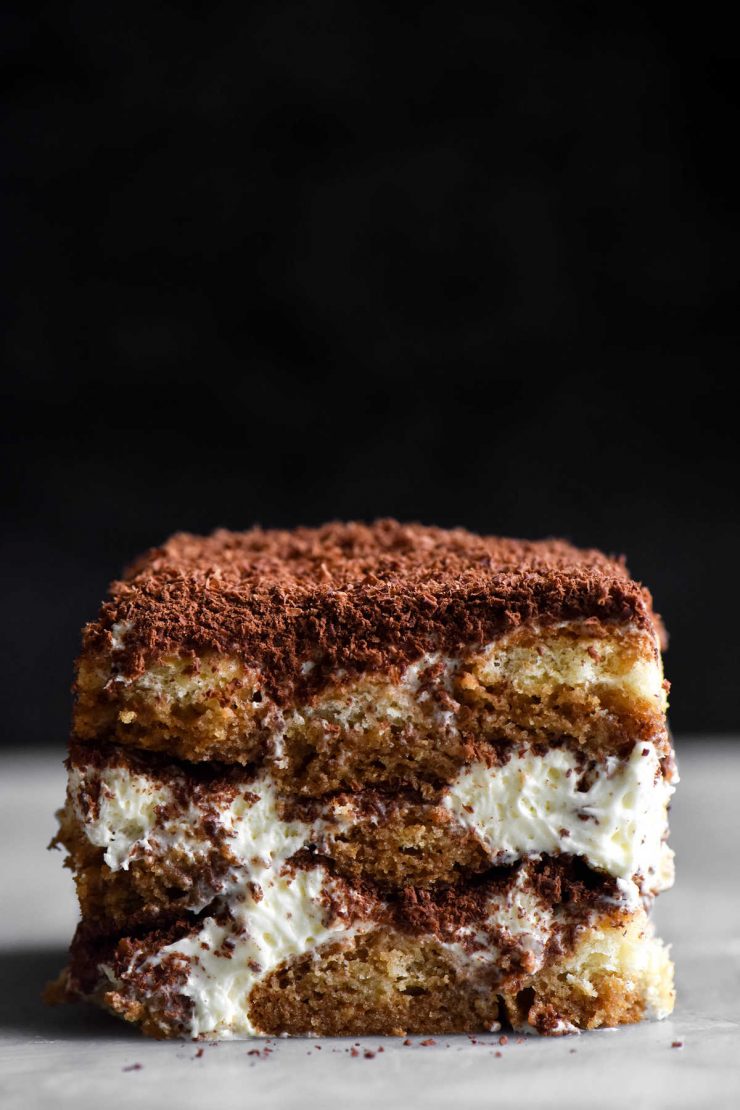
Homemade lactose free mascarpone
Today’s recipe for lactose free mascarpone has been on my site for a while. I developed it for the lactose free, gluten free Tiramisu recipe, but I figured it should have a space of it’s own.
Lactose free mascarpone is made with a simple mix of lactose free cream and lemon juice. The lemon juice coagulates the cream, making a thick and rich lactose free mascarpone.
Here in Australia, we’re lucky to have lactose free cream available in the shops. Lactose free cream is basically just cream that contains lactase. Lactase is the enzyme that breaks down lactose, which is what gives people with lactose intolerance issues. It is worth noting that lactose free does not equal dairy free. Lactose free cream has the lactose removed, but it is not dairy free. If you have a dairy allergy or are plant based, this recipe is not for you.
 Making your own lactose free cream
Making your own lactose free cream
If you happen to live somewhere without access to lactose free cream; fret not! You can also make your own lactose free cream. This is as simple as adding lactase drops to your cream and leaving it to do it’s work. It should be said that it’s difficult to know how much lactose has been blitzed by the lactase (which is also the case with lactose free products sold at the shops). However, it is still a good way to minimise the lactose content.
Lactase is generally ingested with a lactose heavy meal to help break down lactose in food. If you’re particularly lactose intolerant, I recommend keeping some on hand in case.
In Australia, the main brand of lactase drops is called Lacteeze. They have some very succinct information on how to convert dairy to lactose free using their product.
 Making lactose free mascarpone
Making lactose free mascarpone
Now that we have covered cream, let’s chat mascarpone itself. Mascarpone is a rich, creamy cheese made with cream and an acid. Adding acid to the cream as it cooks makes it coagulate and form curds. Think of the process as like making ricotta, but made with cream instead of milk.
Once the mixture has formed curds and whey, it’s a matter of thoroughly draining the mascarpone before use. Like ricotta, this can be a cursory squeeze or an overnight drain. How long you drain the mascarpone for depends on what you’re using it for. For a spread or a pasta sauce, you wouldn’t need to drain it for long. For tiramisu, though? Overnight is best.
Once the mascarpone is strained, you can season it and it’s ready to go. Even if you’re using it in a sweet application, a small pinch of salt will never go astray.
Ingredient notes and tips
I use Zymil lactose free full fat cream for this recipe. It’s available in most big Australian supermarkets (I haven’t checked Aldi though). Full cream is best here.
I have had trouble using a thickened regular cream to make mascarpone. See more in the section below.
You cannot use light cream for this recipe. Any cream you use needs to be 35%+ fat.
If the cream isn’t hot enough, not much will happen when you add the vinegar. The mixture needs to coagulate enough that it can be strained without just slipping through the muslin cloth as cream. You want to heat it gently, but get it nice and heated before you add the lemon juice ; 85C or 185F.
A lot of recipes specify that you must have a kitchen thermometer. I totally get that, because it is a temperature controlled sort of recipe. That said, I have made lots of mascarpone without one. It is a little more trial and error but totally possible.
I have a Thermapen which I recommend if you’re on the market. I use it for sourdough, sugar work and really just anything that needs one. They’re not cheap, but worth it for someone like me.

Notes if you don’t have a kitchen thermometer
As we’ve discussed, it is possible to make lactose free mascarpone without a thermometer. It’s a bit more hit and miss, but I have done it successfully many times.
Make sure the cream is really well heated but not overheated. You don’t want it to split or burn, so use a small saucepan on a low heat.
By all accounts, the right temperature to add the lemon juice is just before the cream begins to boil.
I am an amateur lactose free cheese maker, but my instinct would be to slightly undercook it if unsure. It cooks a little longer with the lemon juice, so it will still have time to right ship. I have used this method with ricotta making – undercook if uncertain, and then cook a little longer with the acid. Better than split cream.
The texture should be thick like a thinner style of yoghurt and a little gritty once cooked. It should be thick enough that you can strain the whey off without the cream slipping through the muslin cloth (or nut milk bag, which is what I use).
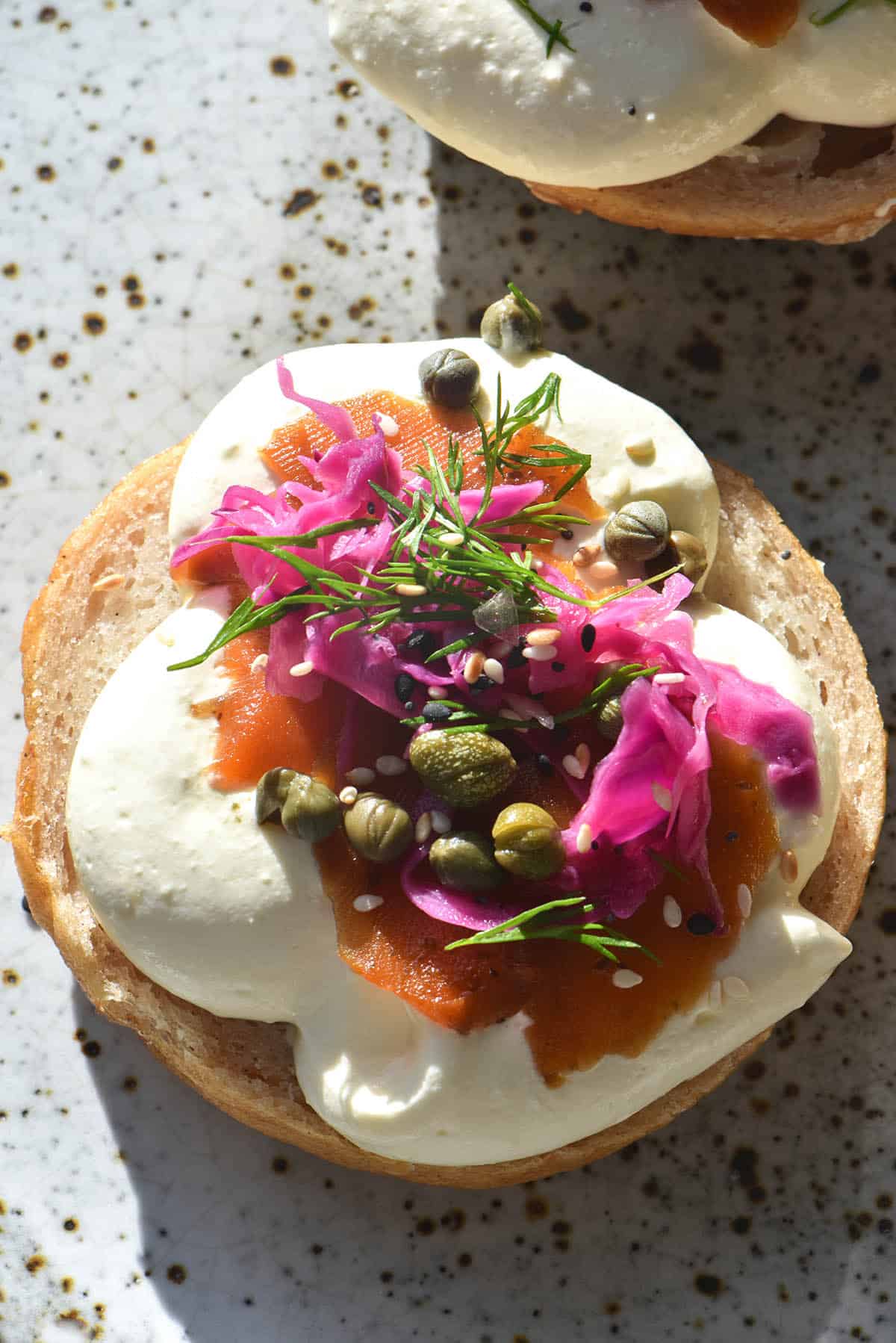
An important note on the cream
Recently, I tried to make this mascarpone using regular thickened cream. I don’t have lactose issues, so it seemed a more cost efficient idea (Zymil is double the price). I have yet to figure out exactly why, but my cream never coagulated. I added more and more lemon juice, cooked and it for longer to no avail. The cream turned a yellow colour (although it didn’t split) and refused to drain any liquid off. I checked the label and it contained gelatin (should have checked beforehand) and I suspect that had something to do with my fail. Although Zymil can sometimes have gelatin, I wonder if it is a smaller quantity. This would account for why I have had success with making mascarpone out of Zymil, but not regular thickened cream.
Anyway! This is all to say: be sure to check the labels and use a cream without gelatin, if possible. If you’re making your own lactose free cream, or you don’t need it to be lactose free, be sure to start with heavy cream, rather than thickened cream, and check the labels before buying.
How much lactose free mascarpone does this recipe make?
This depends on how long you cook it and how long you drain it. Drained for a few hours, my batch weighed 300g, which is probably about 1 1/2 cups. It had the consistency of a thick yoghurt and had drained off about 1/2 cup of whey. After draining overnight, the mascarpone weighed 260g and had drained off over 3/4 cup of whey.
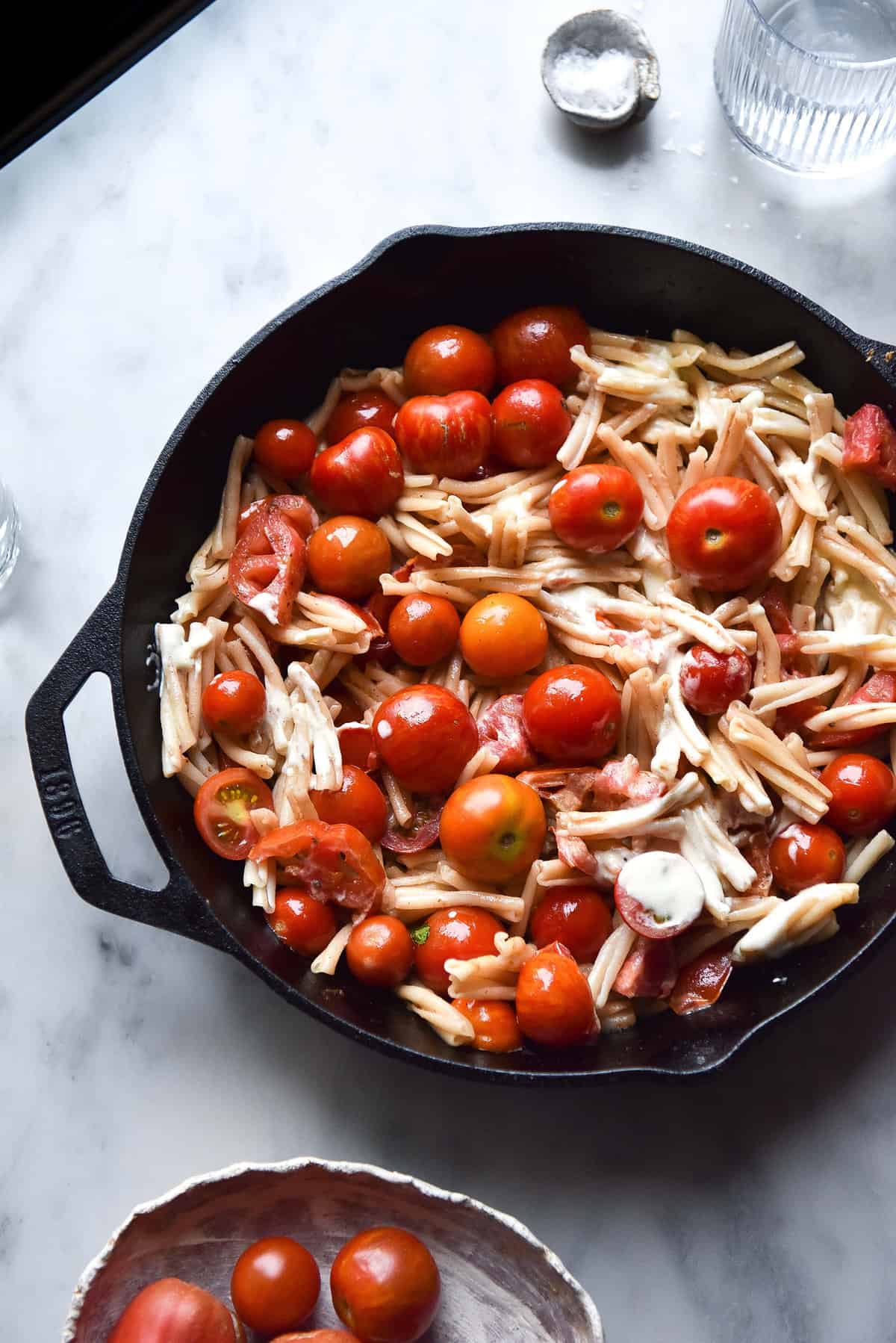
Uses for your lactose free mascarpone
- Lactose free, gluten free Tiramisu
- Smeared over some gluten free sourdough toast or grain free toast
- Summer tomato and mascarpone pasta
More homemade lactose free dairy recipes

Lactose free mascarpone
Ingredients
- 500ml full fat lactose free cream
- 1 tbsp lemon juice
Instructions
- Place the cream in a small saucepan over a low heat. Cook gently until the cream reaches 85C/185F. If you don't have a thermometer, this is just before it begins to boil.
- Take the cream off the heat just to add the lemon juice. Continue to cook for 2-3 minutes or until it has thickened and become a little gritty in texture.
- Remove from the heat and pour into a muslin cloth, nut milk bag or very thin, clean and unprinted/coloured tea towel over a sieve. If, when you are straining your mascarpone, the liquid running through the sieve is not mostly clear and it looks like milk or cream (some opaque blobs are ok, but it should be predominantly a clear yellowy liquid) return all of the mascarpone back to the saucepan, cook for a minute or two, allow to sit in the saucepan off heat for five or so minutes, then try again.
- Strain up to 24 hours (I put my strainer on a measuring jug, cover as best I can and pop into the fridge overnight).
- Once strained, place into an airtight container and stir through a little salt, if you fancy it. Use within 3-4 days.

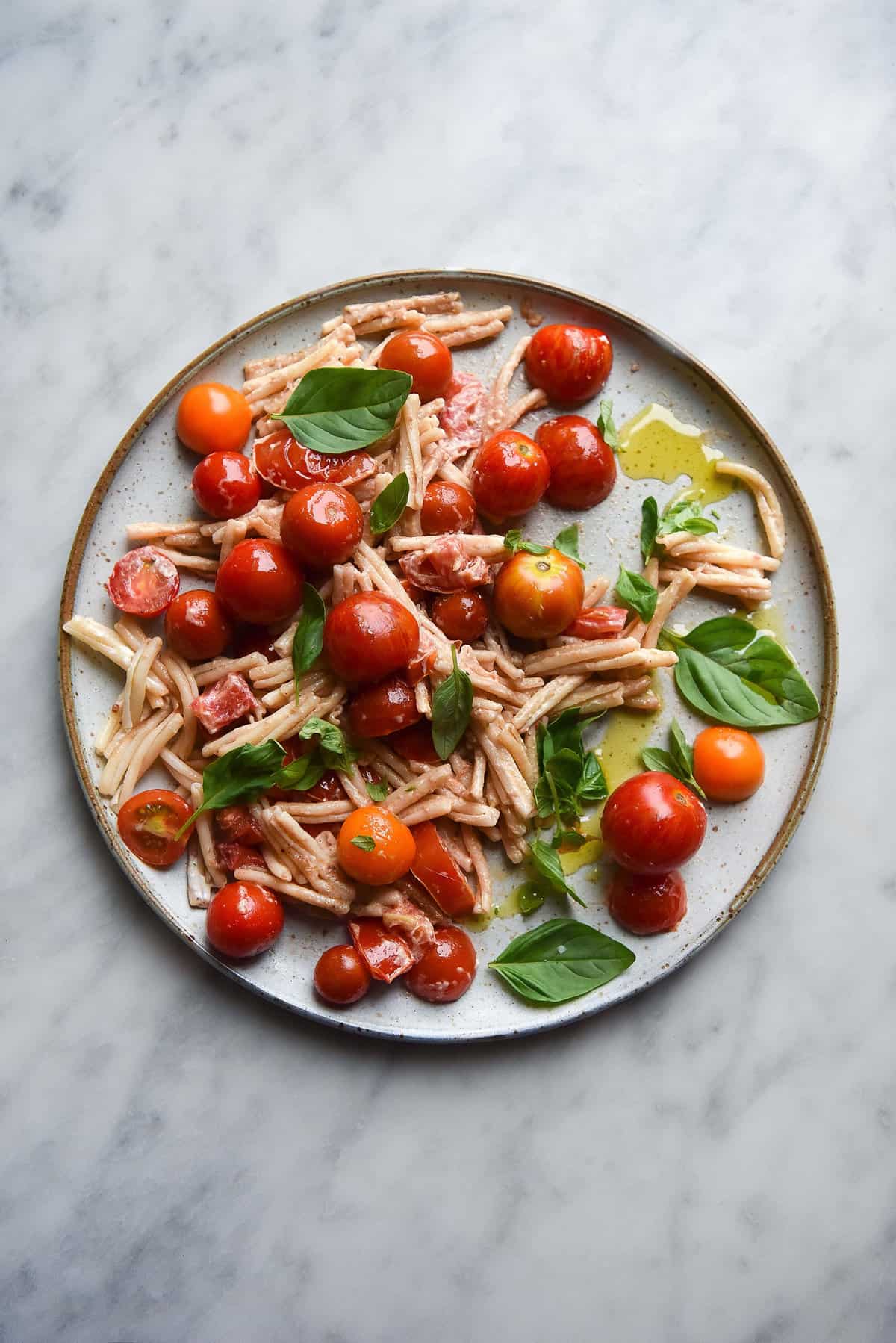 Making your own lactose free cream
Making your own lactose free cream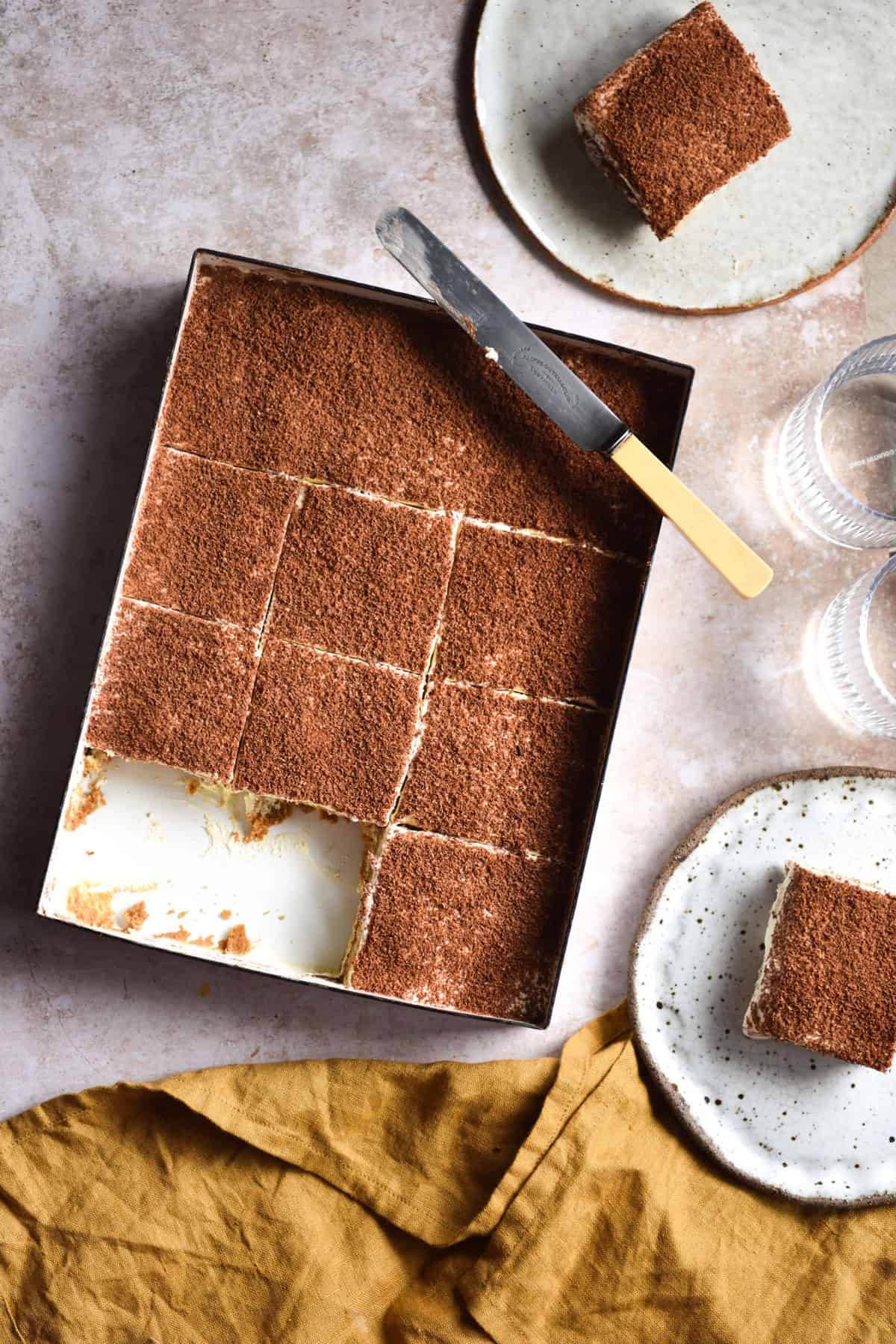 Making lactose free mascarpone
Making lactose free mascarpone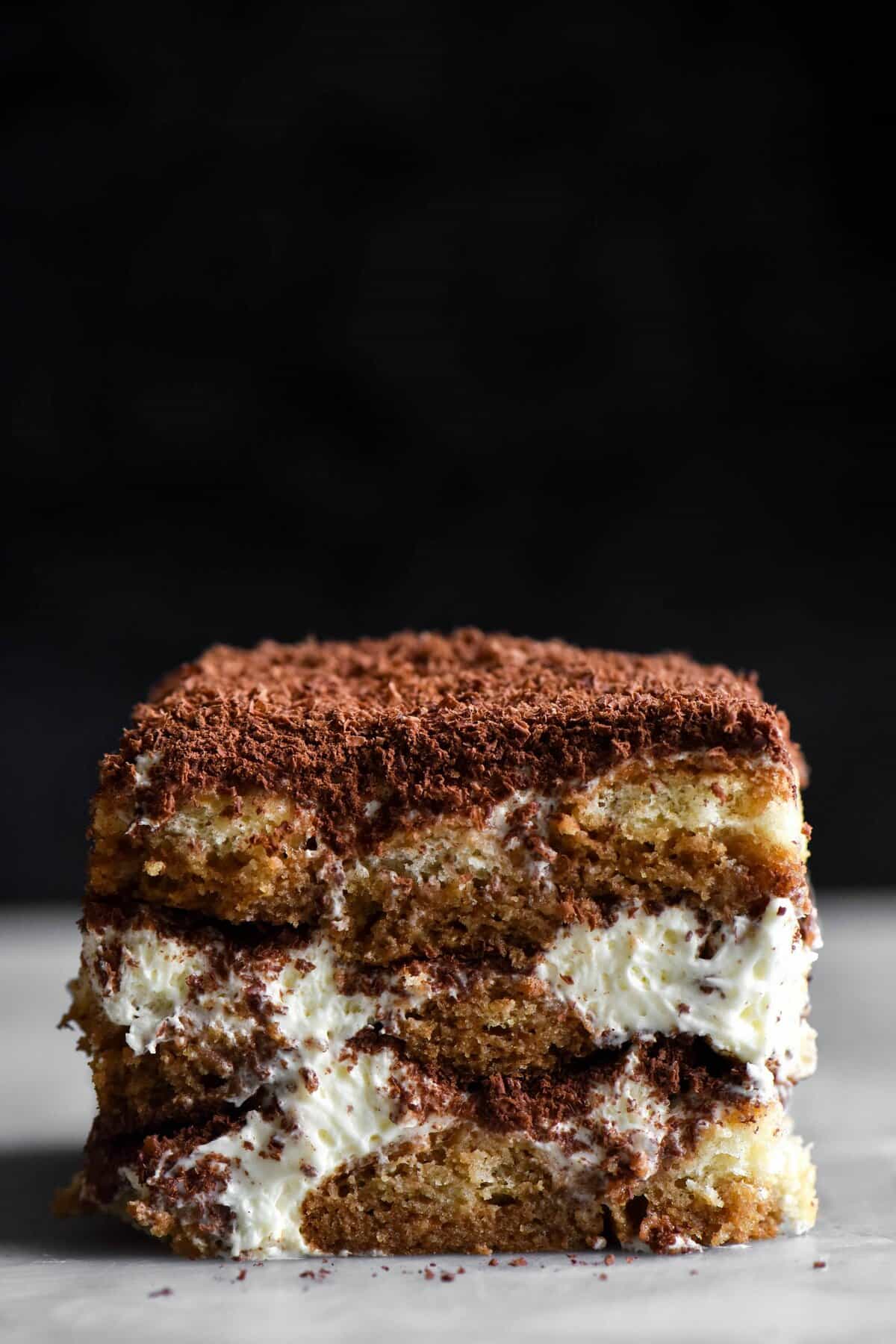
No Comments